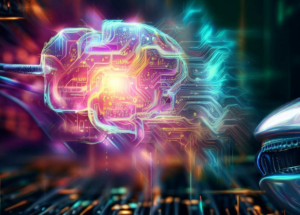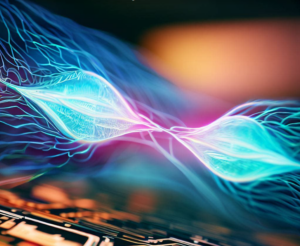
Natural Language Processing, widely recognized as NLP, has undoubtedly taken a prime position in the realm of technology, fostering more interactive and engaging experiences for people across the globe. Serving as a bridge between users and technology, NLP boosts the ease of engagement, making interfaces more intuitive and straightforward. It has found its applications in various areas – smart phone’s predictive text input, smart home devices, and more.
Artificial Intelligence (AI) has immensely contributed to the evolution and sophistication of the Natural Language Processing field. With the primary aim to facilitate human-computer interactions, NLP has seen strides in significant developments enriching user experiences. Thanks to NLP, devices today can understand and interact with human language, thus reshaping the digital landscapes.
Unraveling the intricacies of this powerful tool, one finds it is more than just identifying and recognizing word order in sentences. NLP indeed goes a step above, delving deeper into semantic analysis. It works relentlessly to understand the apparent meaning behind the syllables and words spoken, thereby decoding the intent and sentiment of the speaker. Every nuanced inflection or hint of sarcasm is detected, interpreted, and translated into comprehendible data for the computer.
The potential of NLP is notable, equipped with abilities that assist technology in approximating human language behaviors. Implementing NLP in systems makes it possible for them to comprehend conversational cues, identify contextual deviations, and even adapt to different languages and dialects with remarkable precision – a feature that makes technology remarkably accessible and user-friendly.
AI translates human language into a form that machines can understand, and vice versa. The beauty of NLP lies in eliminating the monotony of binary language, introducing a more dynamic and interactive mode of communication. The smart speakers and personal assistant apps employ NLP not only for verbal responses but also to ensure the responses are contextually accurate and relevant.
With Natural language processing at its helm, the future of technology looks promising. Irrespective of the task at hand, be it for personal use or business, NLP has the versatility to cater to various needs with utter efficiency and accuracy, and it continues to redefine the very nature of human-technology interactions.
The Functionality of Keras and TensorFlow in NLP
 Natural Language Processing (NLP) has found invaluable aid in Keras and TensorFlow. These open-source software libraries present immense capabilities for complex modeling and easy implementation of deep learning applications. They both are essential and instrumental in advancing the field of NLP.
Natural Language Processing (NLP) has found invaluable aid in Keras and TensorFlow. These open-source software libraries present immense capabilities for complex modeling and easy implementation of deep learning applications. They both are essential and instrumental in advancing the field of NLP.
Designed by Google, TensorFlow stands out due to its complex, intricate nature which is perfect for advanced modeling. As an open-source library for deep learning, it has robust community support, not to mention the backing of a tech giant. TensorFlow constructs static computation graphs meticulously, offering immense computation power to developers. Its diverse functionalities cover numerous tasks from image recognition to neural language processing and word embeddings. These utilities make TensorFlow an integral resource for multiple deep learning initiatives apart from NLP.
On the flip side, Keras serves in the capacity of an interface for TensorFlow. It targets the creation of deep learning models using simple mechanics. This high-level neural networks API is known for its simplicity and ease of use, which greatly aid developers. Keras also bolsters an effective and flexible implementation due to its ability to run on top of TensorFlow.
When these two powerful tools are combined, their symbiosis gives birth to an incredibly effective instrument for natural language processing. Individually they are stellar, together they are invincible. The strength and depth of TensorFlow complement extremely well with the simplicity and ease that Keras brings. What is remarkable is that both these libraries have the capacity to operate synergistically. This enables the developers to design complex NLP models with considerable simplicity.
Other advantages that accrue from their use, include swift prototyping abilities, conducive convolutional and recurrent networks, reduction in cognitive load, capacity for multiple backend support, and ability to run seamlessly on CPU and GPU.
NLP models achieve higher accuracy rates, experience lowered latency, and deliver improved results, as confirmed by an increase in language understanding capabilities. The innovation driven by Keras and TensorFlow in the realm of NLP is transforming the way humans interact with machines, thereby ensuring a more enriched experience for future generations.
Comprehensive Guide to Applying Keras and TensorFlow in NLP
Natural Language Processing (NLP) is a fascinating field that intersects machine learning and linguistics, serving to instruct machines on understanding human language and deriving insightful context. A notable aspect of NLP is the necessity to preprocess data prior to deeper analysis or modeling. The raw data is processed through numerous steps such as tokenization, lower-casing, stop-words removal, and lemmatization. This stringent preprocessing is crucial to coherent text data that can then be effectively utilized in machine learning modeling.
When the data is organized and ready, we step into the realm of deep learning models, often operating with the support of Keras and TensorFlow. Keras is a high-level neural network API, written in Python. It’s a superlative tool for implementing deep learning models, with utilities that allow for the smooth architecture of LSTM models, RNNs, and GRUs. Each one is fundamental to sequence prediction problems, a critical aspect of NLP.
The beauty of Keras lies in its simplicity, from adding layers and defining the loss function, to setting the optimizer. Coding with Keras, developers can impart machine intelligence by crafting intricate deep-learning models.
Beyond Keras, TensorFlow makes its appearance. It is an open-source platform for machine learning, which has robust capabilities for training, evaluating, tuning, and making predictions. Powered by Google, TensorFlow commands a significant role in large-scale data handling and executing complex computations. By facilitating and accelerating the training process, TensorFlow contributes directly to enhancing the model performance.
The collaborative interaction of these two powerhouses, Keras and TensorFlow, erect a backbone of development and implementation in the vast sphere of Natural Language Processing. With their combined capabilities, they equip developers with a significant edge in creating high-accuracy models that excel in performance.
Encompassing this, we see the wider impact of Keras and TensorFlow in Natural Language Processing, they empower developers to build potent digital constructs. Such constructs can understand, interpret, and engage in human language tasks leading to a significant transformation in human-computer interactions.
With sophisticated tools such as Keras and TensorFlow, this evolution of NLP promises a future where machines not only understand human language but can also interact and engage meaningfully. As these libraries continue to progress, these exciting advances in NLP beckon on the horizon with great promise.